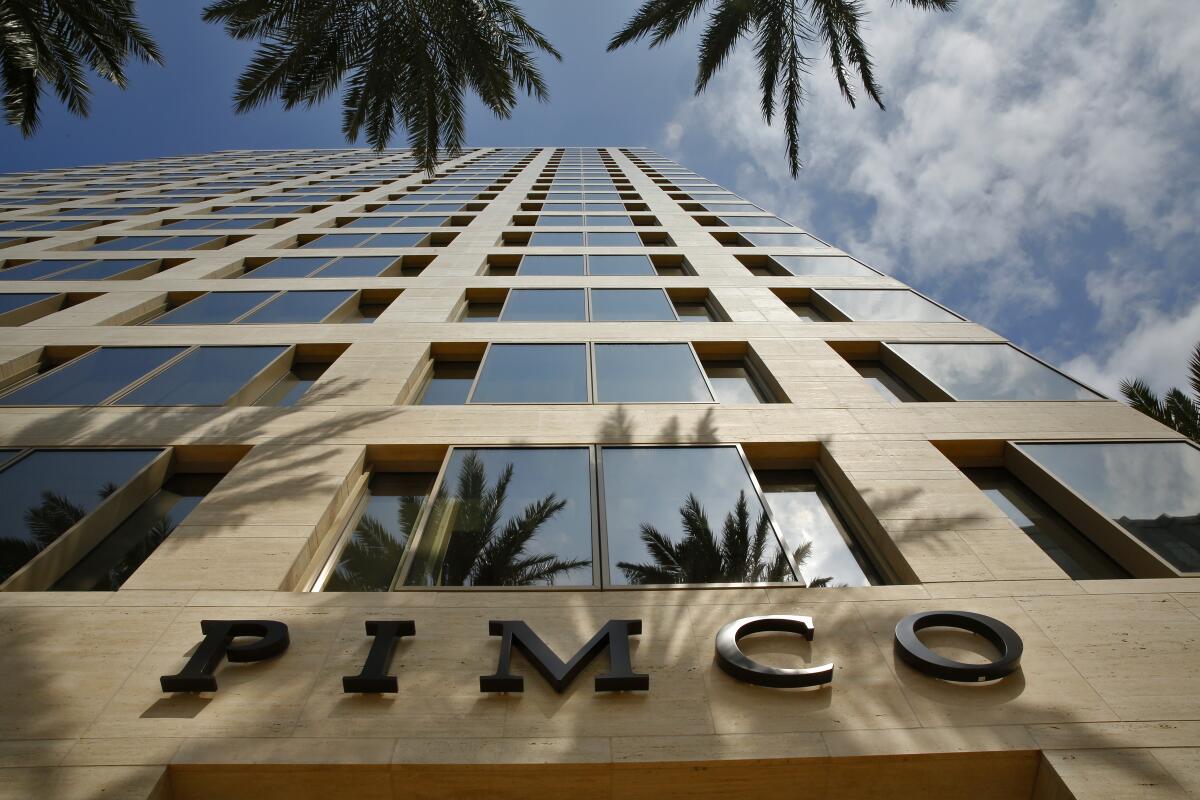Pimco fund added to Russia credit default swap exposure ahead of Ukraine war

- Share via
Pacific Investment Management Co.’s largest fund increased its exposure to Russian default swaps in the run-up to the country’s invasion of Ukraine by selling more than $100 million of protection to banks that include Barclays and JPMorgan Chase & Co.
At the start of the year, Pimco’s Income Fund already had almost $1 billion of bets on Russia via credit default swaps, and it added a net $106 million to that in the first quarter of 2022, according to fund documents filed this month with the Securities and Exchange Commission. The bulk of the new swaps were sold in January, with some added in February before the war began, according to a person with direct knowledge of the matter.
The exposure leaves Pimco as one of the biggest players in this week’s drama over whether Russia’s credit default swaps will pay out — a question that has been top of mind for many debt investors since the invasion of Ukraine in February. Pimco is part of a panel of dealers and investors that’s set to meet Tuesday to decide whether the swaps should be triggered by Russia’s failure to include $1.9 million in extra interest on a payment made earlier this month.
The credit default swaps act as insurance contracts that Pimco would pay out to counterparties if Russia is deemed to have failed to pay its debts. That may not translate into major additional losses, as Pimco has already significantly written down its Russia positions, said the person, who asked not to be identified discussing specific investments. Those markdowns have contributed to the fund’s 6% drop so far this year, though that’s a smaller decline than the fund’s benchmark.
On TikTok and Instagram, pregnant women find themselves targeted with videos that prey on their worst fears as expectant mothers, from birth defects to child loss. For some, quitting social media is the only solution.
Pimco’s Russia holdings were reduced by two-thirds during the first quarter and accounted for less than 1% of the fund’s $128 billion of assets, with credit default swap positions making up a small portion, Michael Reid, a Pimco spokesperson, said in an emailed statement.
“While Russian external and local bonds have been marked down significantly, the fund benefited from some of the positions getting redeemed at par, such as Gazprom,” Reid said.
Russia sovereign debt has plunged in value since the war began, and trading on credit default swaps indicates about a 90% chance that the country will default on its foreign debt within the next year. Credit default swaps covered a net $3.1 billion of Russian debt as of last month, according to the Depository Trust & Clearing Corp.
It’s possible that Pimco made money on other trades linked to Russia. The ruble has rallied almost 20% against the dollar this year, while energy prices have soared. It’s also possible that the bonds it would receive to settle credit default swaps could rise in value, though a top global lawyer in sovereign debt litigation said it’s unlikely that holders of Russian government bonds would be left with a viable path to recover their money if the country defaults.
As part of Pimco’s additional exposure to Russian swaps, the money manager sold about $77 million notional to Barclays, $31 million to JPMorgan and more than $7 million to Goldman Sachs Group Inc. in the first quarter, the documents show. Pimco also owned more than $1 billion of Russian corporate and sovereign debt at the start of the year.
The Russia exposure amounts to a small part of the $2.2 trillion that Newport Beach-based Pimco managed at the end of 2021. Still, the losses have added to a difficult period in markets that saw clients of the firm, which is owned by German insurer Allianz, pull 13.6 billion euros ($14.6 billion) of assets in the first quarter.
More to Read
Inside the business of entertainment
The Wide Shot brings you news, analysis and insights on everything from streaming wars to production — and what it all means for the future.
You may occasionally receive promotional content from the Los Angeles Times.









